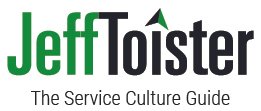We've all experienced survey begging.
Sometimes, employees offer an incentive. My nephew was recently offered free food in exchange for giving a fast food restaurant all 10s on their survey.
Other times, employees try to pull on our heart strings. They tell customers they'll get in trouble if they don't receive a good score.
My friend Halelly recounted a recent experience taking her car into the dealership for service. "The (service advisor) coached me in person when I got the car serviced and has now sent me this email too."
The email warned Halelly that she would be getting a survey from the dealership and possibly the manufacturer. The advisor wrote:
We would greatly appreciate your time to complete the surveys. Anything other than all 10's is considered a fail.
This post explains why employees engage in survey begging. It also explains how you can stop them from this annoying habit.
Survey Begging Defined
Here's my definition of survey begging:
Asking a customer to give a positive score on a survey by explaining how it will directly benefit the customer, the employee, or both.
Here are a few examples:
Offering customers discounts in exchange for a good score
Telling customers a bad survey will get you fired
Displaying "We strive for five" or similar signs
Directly asking customers for a positive survey score
Ignoring actual feedback that's not attached to a positive score
Side note: this definition is a first draft, so I welcome your feedback!
Why It's a Problem
Survey begging causes two problems.
First, it's annoying. Customers don't like being begged and cajoled into giving a survey score. This practice reinforces the perception that companies aren't really using voice of customer data to improve service.
The second problem is survey begging can cover up real service issues by artificially inflating scores. Customers might start spending less or stop doing business with a company entirely, without the company ever understanding what's causing the problem.
In other words, survey begging defeats the purpose of using a survey.
Why Employees Survey Beg
It's all about incentives.
Employees engage in survey begging because they have a clear incentive to achieve a high score or a strong incentive to avoid getting a low score.
Some employees have bonuses tied to their average survey score. This incentivizes them to ask customers for good scores because those positive surveys are literally adding to their paycheck. A slightly negative, but truthful survey might prevent an employee from earning their bonus.
Other employees can face disciplinary action if they receive too many low scores. One automotive service advisor told me he only pushes the survey to customers he thinks are happy because he could lose his job if he gets too many low scores.
Survey begging happens in many industries, but it's a particularly big problem in the automotive sector. Here's a great article on Edmunds.com that explains why.
The bottom line is if you want to stop the begging, you need to remove the begging incentive.
Getting Rid of Incentives
Many customer service managers are reluctant to get rid of survey incentives.
They operate under the false assumption that employees need these incentives to be motivated. There's a mountain of evidence that shows this isn't true. In fact, the number one motivator for customer service employees is being able to help their customers.
I wrote about a great example of this in my book, Service Failure. The Westin Portland was achieving consistently high guest service scores. Then General Manager Chris Lorino explained that part of their success came from a resistance to implementing survey score incentives.
Instead, the hotel made guest service a core part of each associate's job. Here's an excerpt from the book:
"Associates coach and encourage each other to deliver high levels of service that will help them achieve their (guest satisfaction) goals. The hotel's leadership team regularly discusses guest feedback with the associates and encourages people to share ideas that will improve service even further."
Other managers are concerned that eliminating incentives makes it difficult to monitor employee performance through survey scores.
The problem is survey begging artificially inflates survey scores, so you end up rewarding employees who are best at begging, not best at service.
A better approach is to use survey feedback to manage behaviors. For example, if an employee frequently gets surveys saying they are a little abrupt, you can coach them on ways to create a better impression.











